A baby diaper typically contains four main components: the top sheet, the absorbent core, the back sheet, and the fastening system.
There are a variety of different types of baby diapers available on the market, each with its own unique set of features. Usually available in 5 sizes, NB, S, M, L, XL, parents can choose the right size according to the weight of the baby, some babies switch to pull-ups after using a large size, as they are more active at that time. Parents should select the type of diaper that best suits their needs and preferences.
So, what are the components of a typical Baby Diaper? Some of the materials are the same as sanitary napkins, so let’s take a look at each of these components in more detail:
-Hydrophilic Non-woven (top sheet)
The top sheet is the first layer of fabric that comes into contact with a baby’s skin.. Since baby’s skin very sensitive, it is very import to choose a soft top sheet for your diaper. It is made from a hydrophilic material that helps to absorb moisture and keep the skin dry. With different surfactant treatment used in the process. More than 10 kinds of treatment available for the top sheet and in different raw materials.
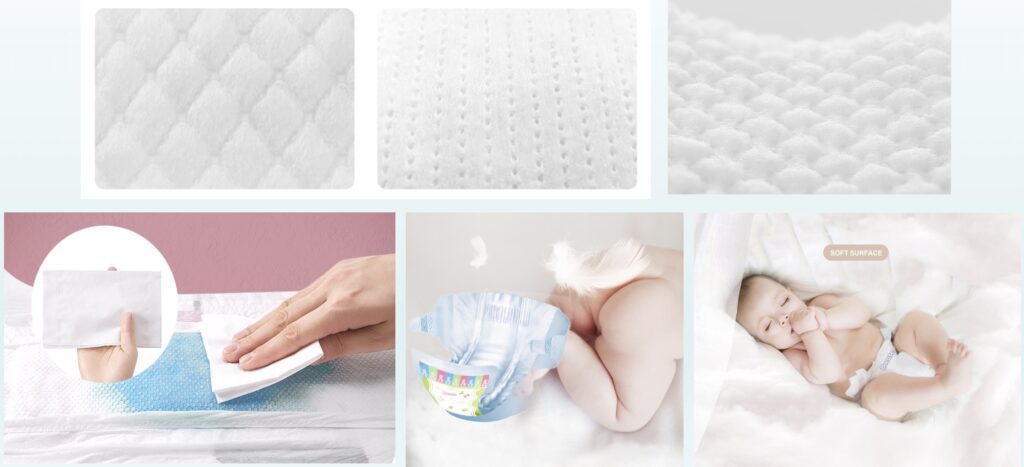
-Hydrophobic Non-woven (leak guard)
Hydrophobic Nonwovens are used as leak guard for baby diaper that are intended to provide a dry barrier while withstanding moisture. They are often used in baby diapers to prevent leakage. Since this type of material resists water penetration with the extremely low absorbency and high stability.

-Core construction (Thick & Thin)
With the rising demand for quality of life and ever-refining technology, baby nappies have been upgraded from the normal thick models to ultra-thin and comfortable, giving babies a better experience and facilitating movement. In order to offer the market different choices and meet consumer needs, baby diaper manufacturers have developed different core constructions, mainly two kinds as below:
Thick type: Thick diapers feature a thick, absorbent layer that quickly absorbs moisture. The construction with fluff pulp mixed with SAP (Super Absorbent Polymer), the absorbent can be as per customized of the SAP quantities to adjust high or low absorbent and also the weight of the diaper is adjustable too.
The primary function of the core wrap is to maintain core integrity during processing by containing the fluff/SAP matrix. Adhesives are used to seal the core wrap and bond adjacent materials to prevent shifting
Ultra-thin Type: Ultra thin diapers have an absorbent core that is made from multiple layers of material. The primary function of the core wrap is to maintain core integrity during processing by containing the fluff/SAP matrix. This makes them very thin and comfortable for active babies. They are also less likely to cause diaper rash than thicker diapers.
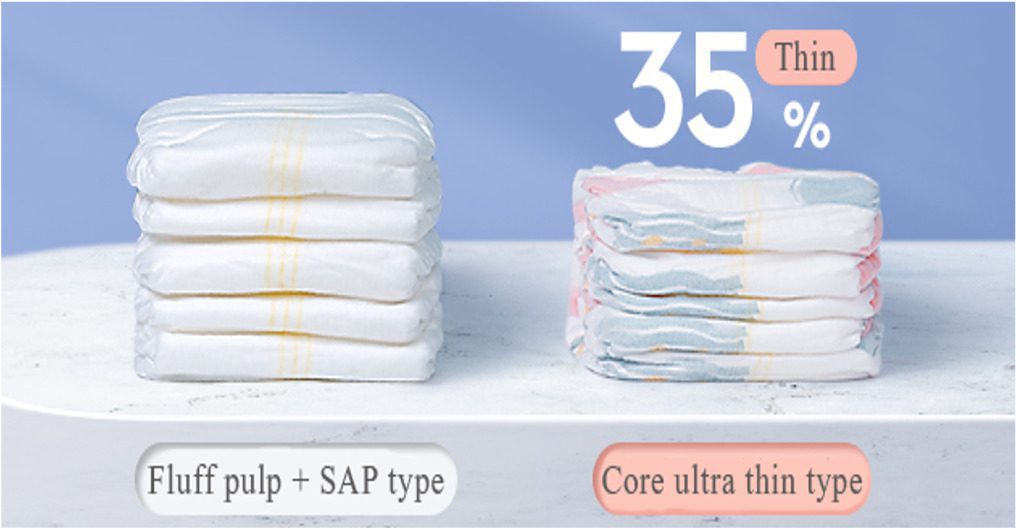
-Absorbent core
The absorbent core is the main component of a baby diaper, responsible for absorbing urine and fecal matter. It is a synthetic material that can absorb hundreds of times. It is usually combined with fluff pulp to create the core matrix. It helps improve capacity for better retention in a disposable baby diaper, allowing the product to be thinner with improved performance and less usage of pine fluff pulp.
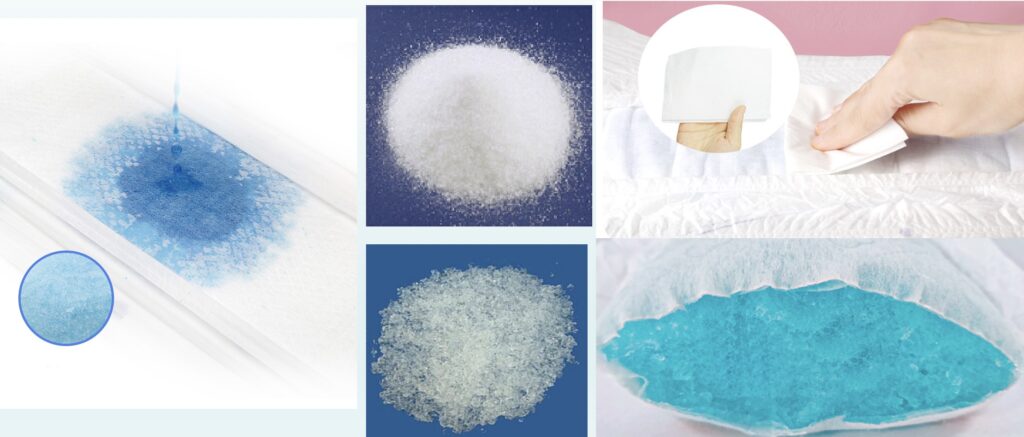
-Cellulose (fluff pulp)
Fluff pulp is an absorbent fiber made from wood pulp. It is used in a wide variety of products, including disposable baby diapers, sanitary pads, and incontinence products. Fluff pulp helps to absorb liquid and keep the wearer dry. Fluff pulp is found at the center of the core, in a ratio with an SAP (i.e., 50/50 or 30/70). It helps with rapid absorption and distribution of fluid. Fluff pulp also assists with core integrity and improves core matrix stability. Adhesives are used to stabilize the fluff/SAP matrix.
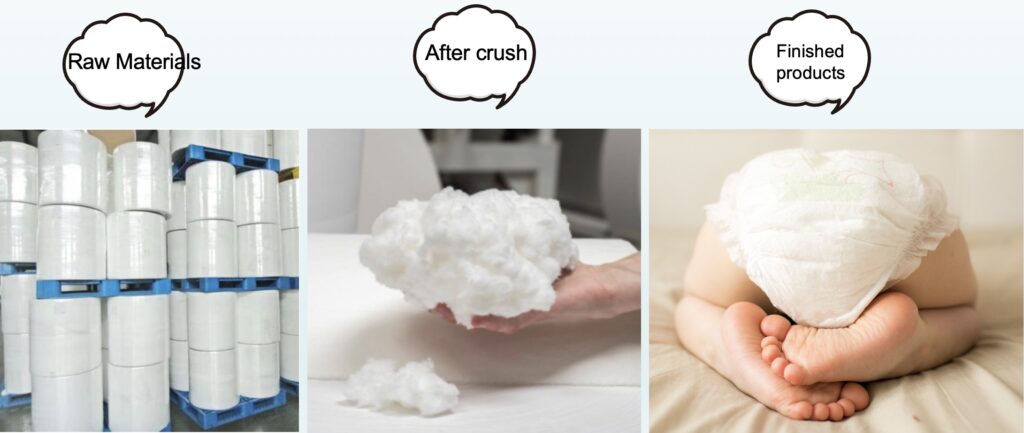
-Waistband
Baby diapers usually have a waistband to help keep them in place. The waistband is made from an elastic material and can be adjusted to fit different sizes. It helps to prevent the diaper from slipping down or coming off entirely.

-Acquisition Distribution Layer (ADL)
ADL is a sub layer used between the top sheet and the absorbent core. Sometimes used in full length, but mostly preferred as a patch near the target zone where urine is most likely to be deposited. This sub layer is especially needed when the absorbent core is very thin -the sub layer quickly moves liquids into the absorbent core and reduces potential leakage. The ADL is very important to provide a sense of dryness of the skin, providing additional separation between the wet pad and the skin. Color available white, green, blue.
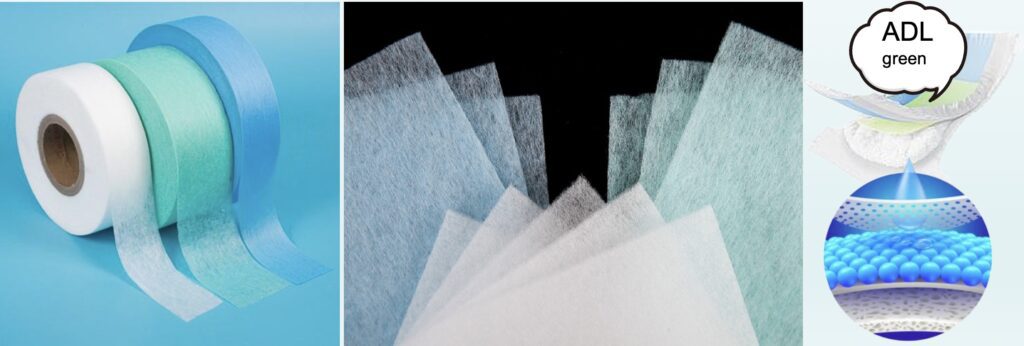
-Wetness indicator
This is a special feature found in some baby diapers. The wetness indicator is a strip of material that changes color when the diaper is wet. This lets the parent know when it is time to change the diaper. This is helpful for parents who are trying to avoid diaper rash.

-Polyethylene film (PE film)
Polyethylene film is the main material used in baby diapers to prevent leakage. It is a water-resistant and air-permeable material that helps keep the diaper dry. It can also be given a cloth-like look, by adding a thin non-woven sheet to the film. The film is also soft and gentle on the skin. It is usually found in the outer layer of the diaper.
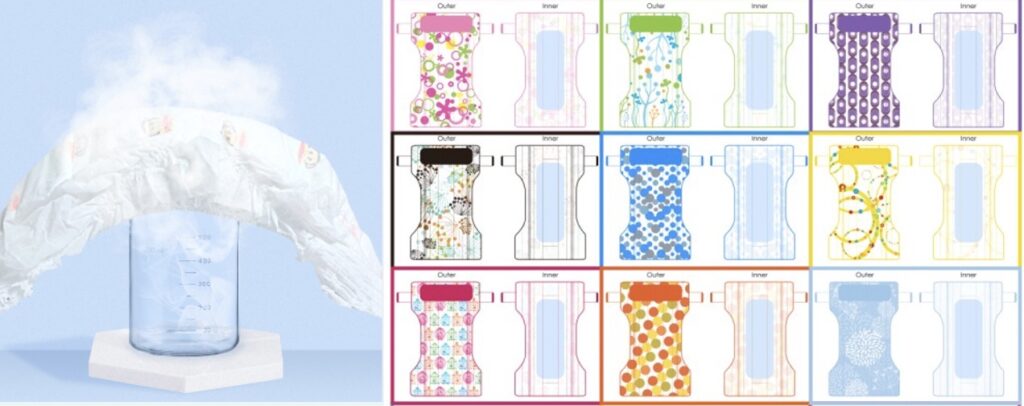
-Hot Melts (Adhesives)
They are used to glue the different components of the baby diaper, to keep the absorbent core in place, promote core integrity by bonding the components together, essential to preventing core shifting, supporting absorbency, providing structure, and stabilizing the fluff pulp and SAP matrix.

-Frontal Tapes
This is used to facilitate multiple repositioning of the lateral tape without tearing the back-sheet, it is made of polypropylene film and attached to the front of the diaper with adhesive. Its use has helped to reduce the thickness of the poly film without the risk of potential tears associated with the opening of the lateral tapes from the back sheet. In premium diapers, a special loop system has been developed in order to use of Velcro type fasteners (also called the “hook and loop” system). This loop tape can use a “locked loop” or a “brushed loop” in order to provide a softer texture or a stronger grip.

-Lateral Tapes (Magic Tape & Adhesive Tape)
It’s more important than ever that tape. In premium diapers, Velcro type materials have been used to provide mechanical grip, it is also known as the “magic tape”. In lower priced diapers, adhesive tape used to save the cost cost of diapers.

-OEM Packing
It can be customized as per buyer’s logo and preferred design, the most economic is the PE packing, transparent outer packing, it can load more quantities into the container, you can customize the piece of packing and design, we can offer FREE design if buyer needed.
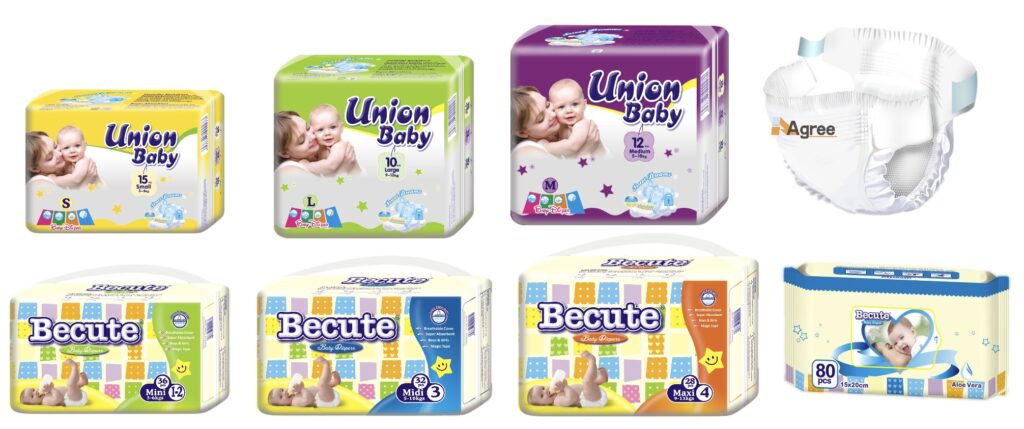
So, what are the components of a typical baby diaper? Parents should select the type of diaper that best suits their needs and preferences, taking into account factors such as the absorbent core, the fastening system, and the material. There are a variety of different types of diapers available on the market, each with its own unique set of features, so parents are sure to find one that meets their needs. Thanks for reading!
This content is brought to you by our CEO of AGREE. For more information on all things diaper related, please go head to our website!


